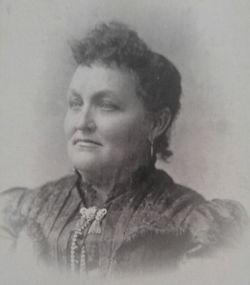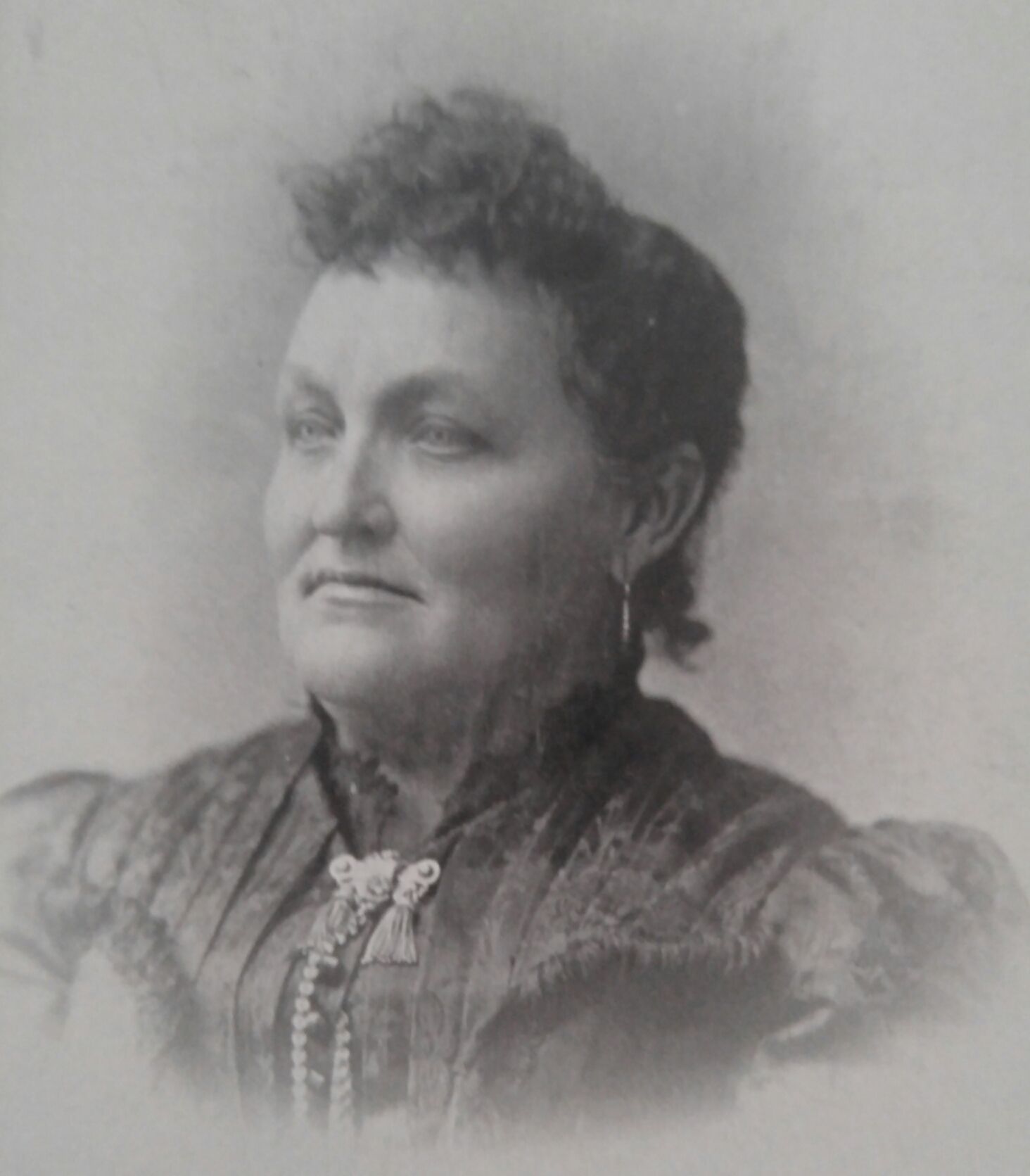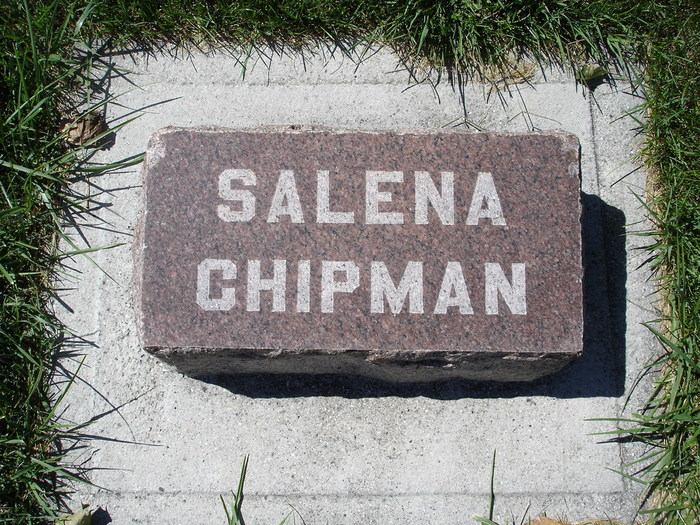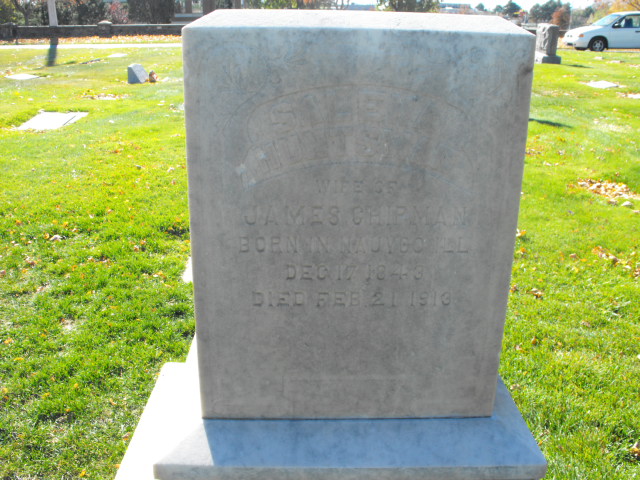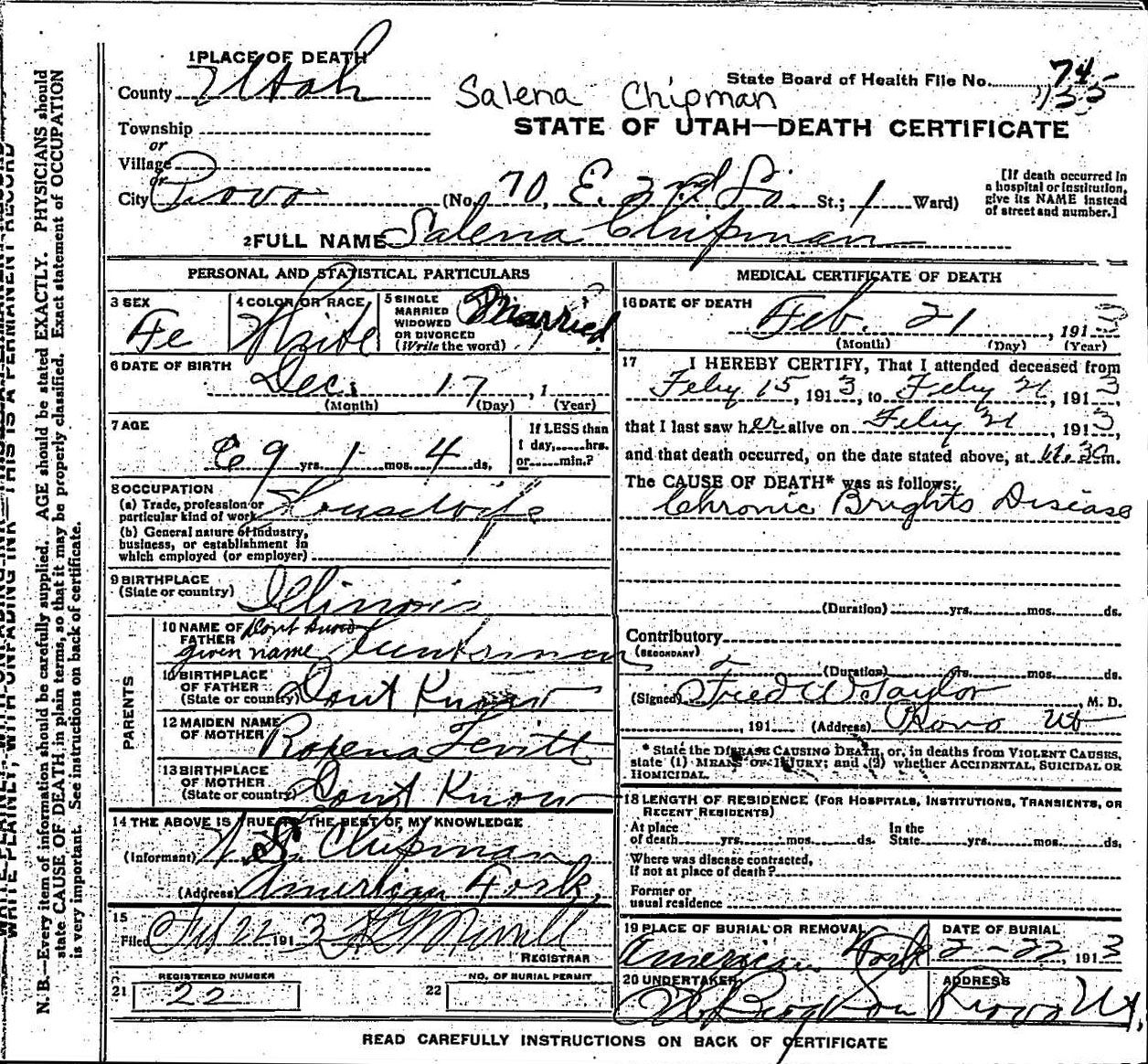Daughter of John Huntsman and Roxanna Leavitt
Wife of James Chipman, 9 August 1862, Salt Lake City, Salt Lake, Utah
History. Selena knew sacrifice, suffering, bravery and deprivation, hardships, and persecution. She knew what "going without" meant. She was proud, and resourceful, managing almost impossible events. She was energetic, saw the better side of things; love of freedom, and desired to do right. Education was important to her; her mother, Roxane Leavitt, was a teacher. The Leavitts had not been poor people and knew many of the finer parts of life. Selena had refinement, artistic tendencies, love, and compassion for others.
She was about 5' 6" tall, like her mother, blue greyish eyes, medium brown hair, a fair "sunny" complexion, a sense of humor, and smiled a lot (laugh lines as proof).
The city of Nauvoo, Hancock County, Illinois, was to be the city of hope, peace, happiness, and freedom. The Saints worked hard to make it a city of beauty unto the Lord, where they had a temple and could worship and do His work. By 1843-44, the mob persecutions had begun. Into this situation, Selena Huntsman was born to Roxane Leavitt Fletcher Huntsman and John Huntsman, on December 17, 1843. By the time Selena was three years old, they were driven from Nauvoo (1846). They moved to Mt. Pisga, where soon a thousand Saints had gathered.
Her sister Ellen Olive was born. Her father, John Huntsman, was killed, shot in the head by Indians, it was thought, and placed in the Missouri River.
The Saints made their preparations for the trek westward. Roxana had the help of her sister Flavilla and husband, and her uncles. She had a cow and an ox to form a team to pull the wagon. She drove all the way. Selena was 6 or 7 years old as they began the trek, and she would remember it. They arrived in the Valley of Salt Lake in 1852, where they stayed a short time, then moved to Lehi, Utah.
The mother Roxane began teaching school in the Snow Family School where she met William Snow, brother of Erastes Snow, the Apostle. She became a plural wife to him.
When the year 1854 closed, there were 500 souls living in and around Lehi and preparations were made for a more extensive activity in planting larger crops in 1855.
The early spring growth indicated a bounteous harvest. Their hopes were soon blasted, for with the warm weather, came the grasshoppers. Growing with astonishing rapidity, they soon swarmed into the fields and began their work of devastation. This left but a desolate waste where once had been the promise of a bounteous harvest. Although still a little girl, keen in her memory was the suffering of the people during the winter of 1855-56. The heavy snow, the extremity of cold weather, continued until late into the spring. With so few comforts to offset the intense cold and only a small store of food, people were subjected to deep and prolonged suffering. Sad indeed were such conditions and all were alike, none could alleviate the trying conditions of another. Sego bulbs and thistle roots together with pigweed "greens" were the principal fare.
Of such are Selena's early recollections until she was old enough to attend Mrs Bassett's one-room log school. Spelling, ciphering, and reading were taught to all ages who desired to pay either money, garden produce, flour, firewood, or anything else that could be used to sustain life.
Women and girls needed to give of their time and strength in the fields hauling and stacking hay and grain, milking and caring for cows, digging potatoes, and hauling sagebrush for firewood. She was one of the noble pioneers who bravely worked and fought with the fruitless, barren soil, and who lived to reap the joy of the harvest of her toil. She lived to see a forsaken land, bleak land desolate, transformed into an Eden by the magic of Pioneer strength and labor. She had wrought a miracle and left a heritage to us.
Selena was a lovely young lady of twenty years, James Chipman met and observed her. Like his older brothers, he entered into a plural marriage by asking her to be his wife. They were married in August 1863. James's first wife, Sarah Annadella Green life was suddenly ended, and Selena made a home for the four young children. Stephen L. paid this tribute to her: "the care and the fostering that I received at the hands of my foster mother, Selena Huntsman Chipman, who was so nice to me as a boy," "She it was who had the responsibility of my infancy and childhood, and as a child, I caused her many pains, heartaches and especially annoyances." She knew for she herself had been through the loss of the father, and having a stepfather, I'm sure she had compassion for Sarah's children and mothered them. Selena and James became the parents of twelve children, ten grew to adulthood.
Selena was a great aid to James, supported him, encouraged him, and took an active part with him in his endeavors, for Selena's enduring hardships had given her a "manageable" experience, and coming from the Leavitts and Huntsman's traits could do this. She was a good hostess, and could entertain civic leaders, and the many who came to her home per his business associates. She was a brilliant woman.
They lived in American Fork until James was chosen First Treasurer of the newly formed State of Utah 1896-1901 at which time they moved to Salt Lake where they lived until she became ill and went to live with her daughter, Mrs. J.T. Farrer (Aunt Weint) in Provo, Utah. she passed from this life February 21, 1913, and was buried in American Fork.
Daughter of John Huntsman and Roxanna Leavitt
Wife of James Chipman, 9 August 1862, Salt Lake City, Salt Lake, Utah
History. Selena knew sacrifice, suffering, bravery and deprivation, hardships, and persecution. She knew what "going without" meant. She was proud, and resourceful, managing almost impossible events. She was energetic, saw the better side of things; love of freedom, and desired to do right. Education was important to her; her mother, Roxane Leavitt, was a teacher. The Leavitts had not been poor people and knew many of the finer parts of life. Selena had refinement, artistic tendencies, love, and compassion for others.
She was about 5' 6" tall, like her mother, blue greyish eyes, medium brown hair, a fair "sunny" complexion, a sense of humor, and smiled a lot (laugh lines as proof).
The city of Nauvoo, Hancock County, Illinois, was to be the city of hope, peace, happiness, and freedom. The Saints worked hard to make it a city of beauty unto the Lord, where they had a temple and could worship and do His work. By 1843-44, the mob persecutions had begun. Into this situation, Selena Huntsman was born to Roxane Leavitt Fletcher Huntsman and John Huntsman, on December 17, 1843. By the time Selena was three years old, they were driven from Nauvoo (1846). They moved to Mt. Pisga, where soon a thousand Saints had gathered.
Her sister Ellen Olive was born. Her father, John Huntsman, was killed, shot in the head by Indians, it was thought, and placed in the Missouri River.
The Saints made their preparations for the trek westward. Roxana had the help of her sister Flavilla and husband, and her uncles. She had a cow and an ox to form a team to pull the wagon. She drove all the way. Selena was 6 or 7 years old as they began the trek, and she would remember it. They arrived in the Valley of Salt Lake in 1852, where they stayed a short time, then moved to Lehi, Utah.
The mother Roxane began teaching school in the Snow Family School where she met William Snow, brother of Erastes Snow, the Apostle. She became a plural wife to him.
When the year 1854 closed, there were 500 souls living in and around Lehi and preparations were made for a more extensive activity in planting larger crops in 1855.
The early spring growth indicated a bounteous harvest. Their hopes were soon blasted, for with the warm weather, came the grasshoppers. Growing with astonishing rapidity, they soon swarmed into the fields and began their work of devastation. This left but a desolate waste where once had been the promise of a bounteous harvest. Although still a little girl, keen in her memory was the suffering of the people during the winter of 1855-56. The heavy snow, the extremity of cold weather, continued until late into the spring. With so few comforts to offset the intense cold and only a small store of food, people were subjected to deep and prolonged suffering. Sad indeed were such conditions and all were alike, none could alleviate the trying conditions of another. Sego bulbs and thistle roots together with pigweed "greens" were the principal fare.
Of such are Selena's early recollections until she was old enough to attend Mrs Bassett's one-room log school. Spelling, ciphering, and reading were taught to all ages who desired to pay either money, garden produce, flour, firewood, or anything else that could be used to sustain life.
Women and girls needed to give of their time and strength in the fields hauling and stacking hay and grain, milking and caring for cows, digging potatoes, and hauling sagebrush for firewood. She was one of the noble pioneers who bravely worked and fought with the fruitless, barren soil, and who lived to reap the joy of the harvest of her toil. She lived to see a forsaken land, bleak land desolate, transformed into an Eden by the magic of Pioneer strength and labor. She had wrought a miracle and left a heritage to us.
Selena was a lovely young lady of twenty years, James Chipman met and observed her. Like his older brothers, he entered into a plural marriage by asking her to be his wife. They were married in August 1863. James's first wife, Sarah Annadella Green life was suddenly ended, and Selena made a home for the four young children. Stephen L. paid this tribute to her: "the care and the fostering that I received at the hands of my foster mother, Selena Huntsman Chipman, who was so nice to me as a boy," "She it was who had the responsibility of my infancy and childhood, and as a child, I caused her many pains, heartaches and especially annoyances." She knew for she herself had been through the loss of the father, and having a stepfather, I'm sure she had compassion for Sarah's children and mothered them. Selena and James became the parents of twelve children, ten grew to adulthood.
Selena was a great aid to James, supported him, encouraged him, and took an active part with him in his endeavors, for Selena's enduring hardships had given her a "manageable" experience, and coming from the Leavitts and Huntsman's traits could do this. She was a good hostess, and could entertain civic leaders, and the many who came to her home per his business associates. She was a brilliant woman.
They lived in American Fork until James was chosen First Treasurer of the newly formed State of Utah 1896-1901 at which time they moved to Salt Lake where they lived until she became ill and went to live with her daughter, Mrs. J.T. Farrer (Aunt Weint) in Provo, Utah. she passed from this life February 21, 1913, and was buried in American Fork.
Family Members
-
![]()
James Chipman II
1861–1928
-
![]()
Alphonso Chipman
1862–1947
-
![]()
Sarah Ellen Chipman
1865–1917
-
![]()
Washburn Snow Chipman
1867–1943
-
![]()
Melissa Roxanna Chipman Harrington
1869–1927
-
![]()
Luna Amanda Chipman Priday
1870–1910
-
![]()
William Chipman
1872–1947
-
![]()
John Chipman
1874–1875
-
![]()
Erastus Chipman
1874–1892
-
![]()
Delano Chipman
1879–1944
-
![]()
Oscar Chipman
1881–1904
-
![]()
Alva Barnabus Chipman
1883–1919
Sponsored by Ancestry
Advertisement
Advertisement
